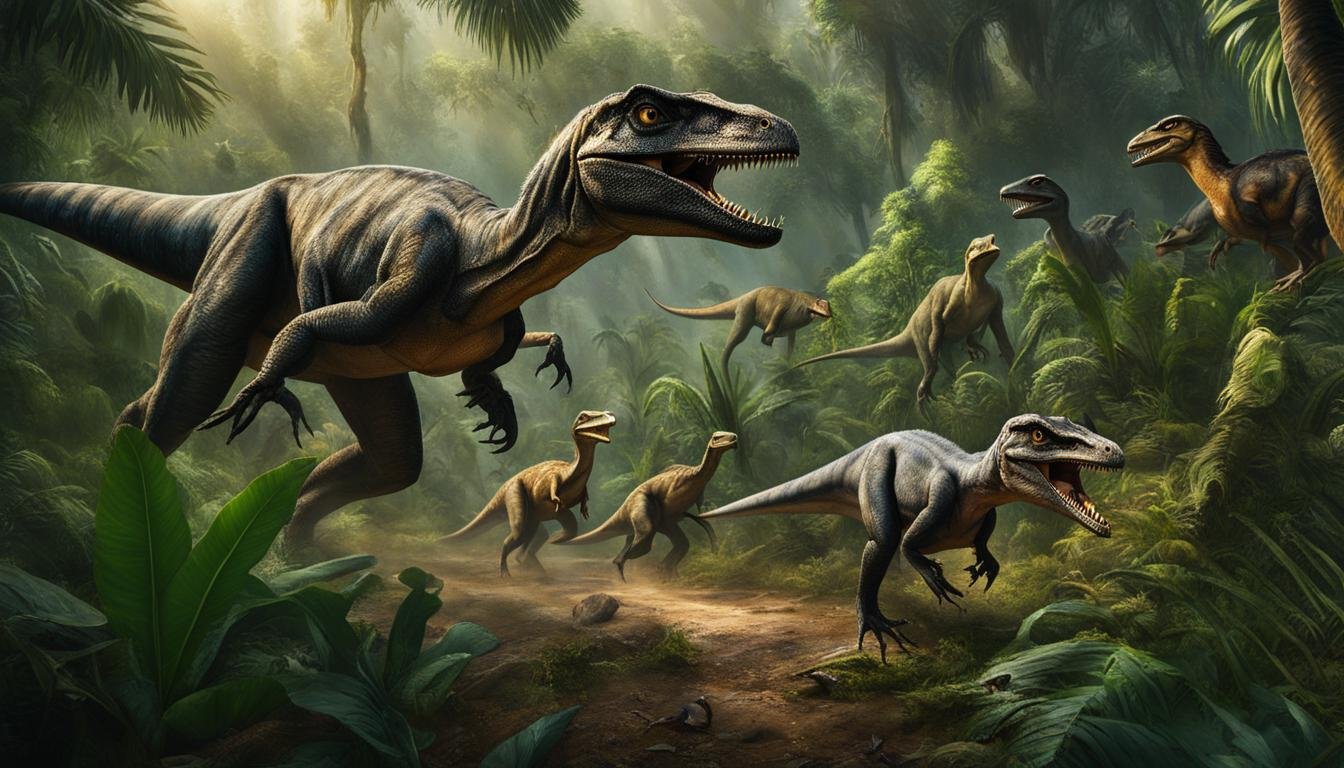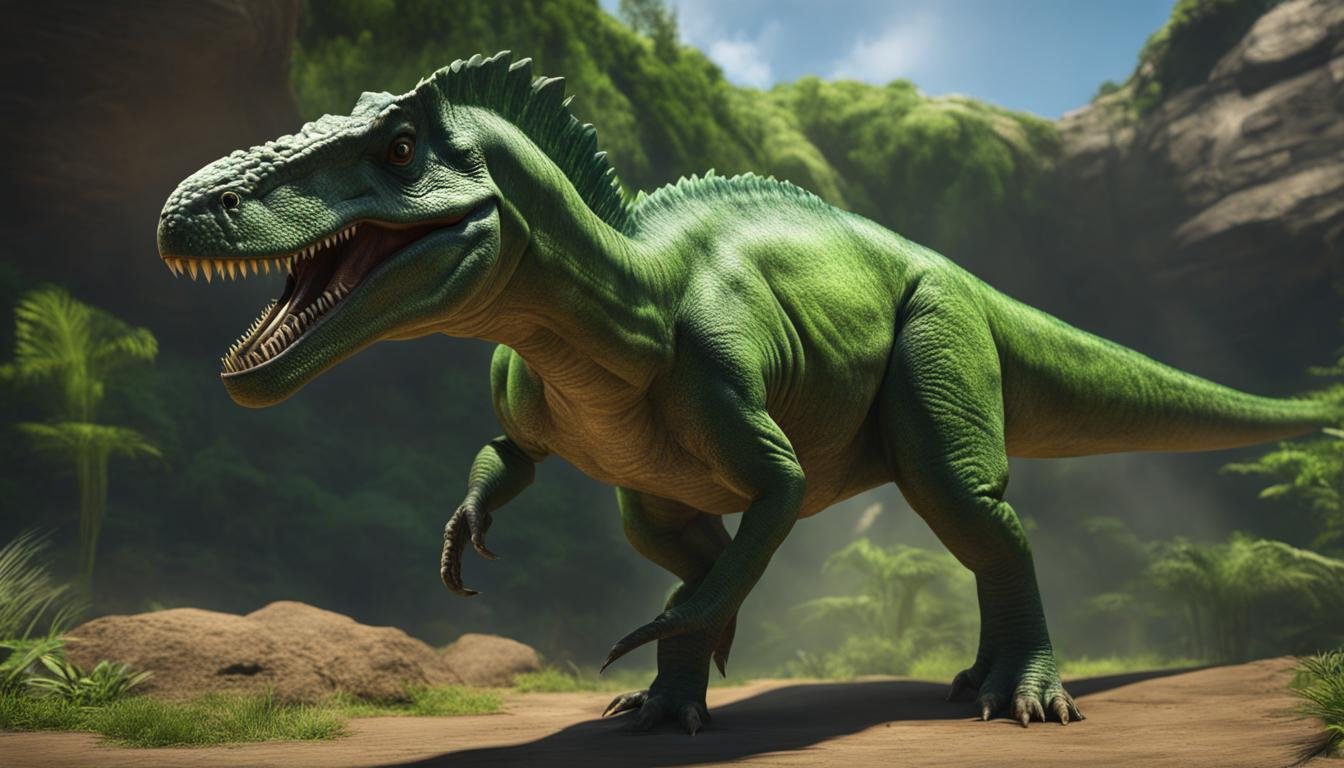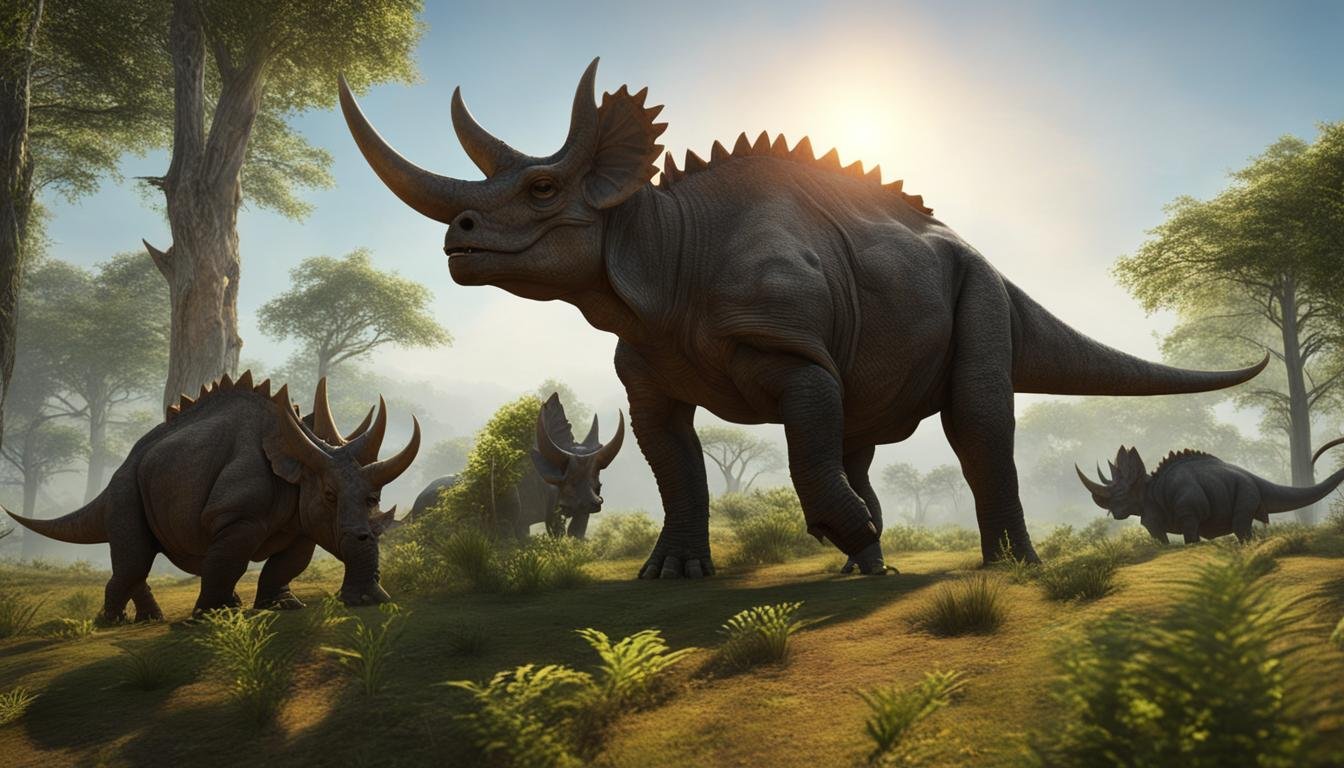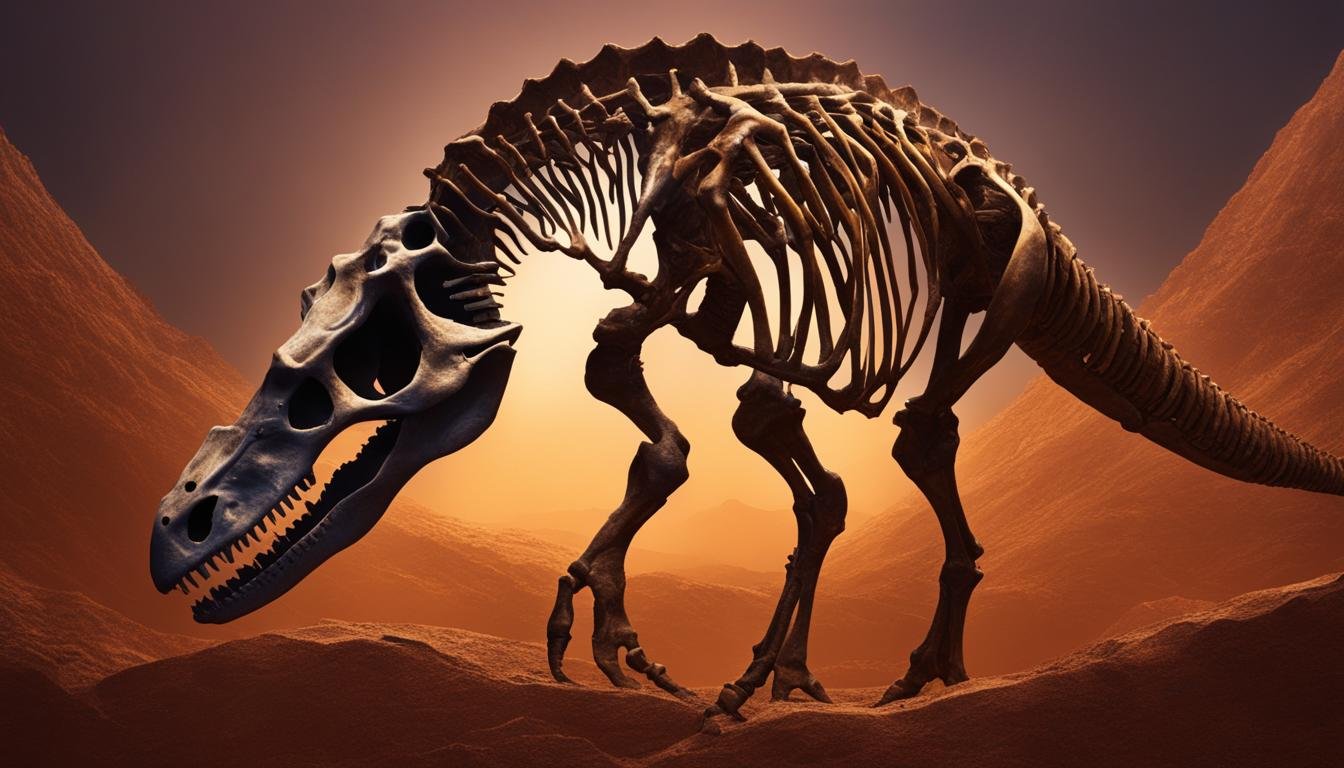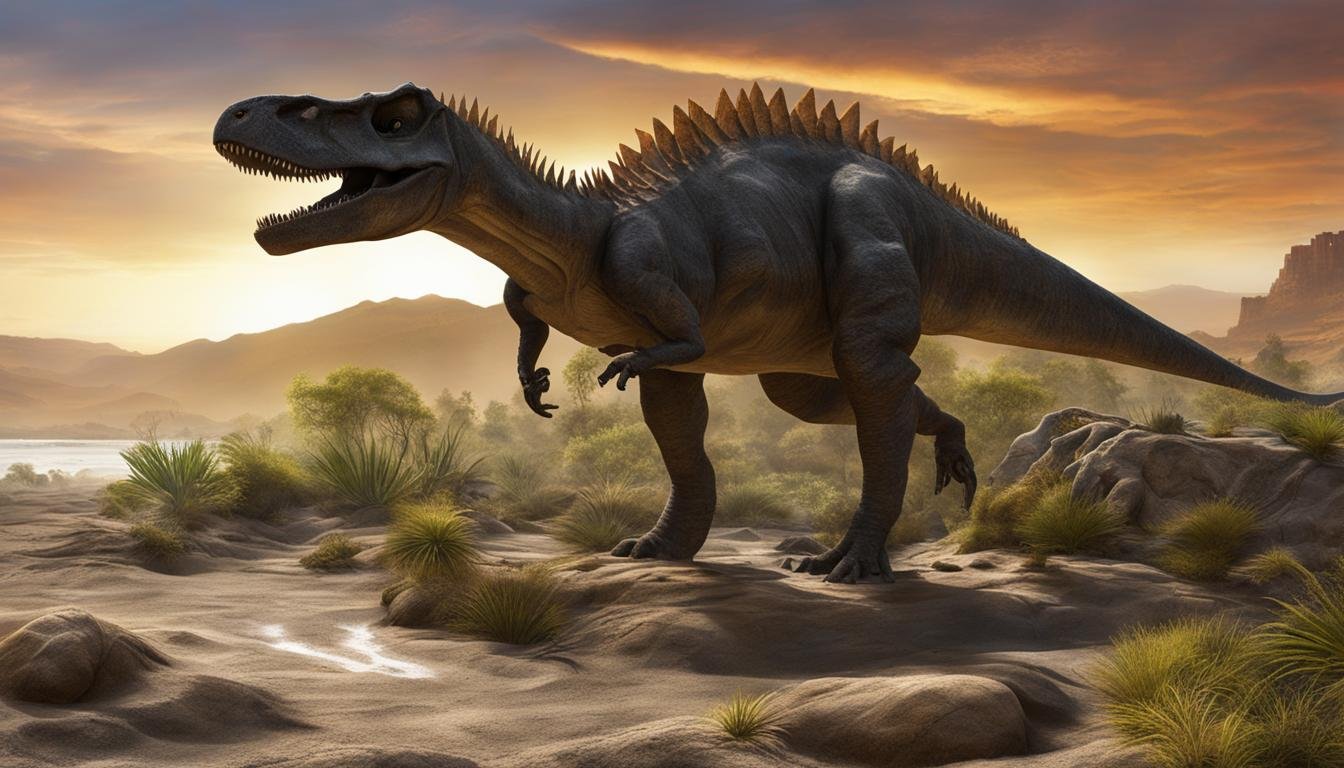Predation played a crucial role in the evolution of dinosaurs. Predatory dinosaurs, known as theropods, were the top predators in the fossil record. They preyed on a wide range of animals, including fish, mammals, lizards, pterosaurs, and other dinosaurs. Large carnivorous dinosaurs like Tyrannosaurus rex have captured the imagination of the world with their crushing jaws and hunting behaviors. The discoveries of these large predators continue to reshape our understanding of the paleoecology of the Mesozoic era.
| Main Point | Description |
|---|---|
| Role of Predation in Evolution | Predation was a significant driving force in the evolutionary process of dinosaurs. |
| Theropods as Top Predators | Theropods are recognized as the dominant predators in the dinosaur fossil record. |
| Diverse Prey Range | Dinosaurs, especially predatory species, had a varied diet, preying on a wide range of animals. |
| Significance of Tyrannosaurus Rex | Tyrannosaurus rex, known for its size and ferocity, has captured public imagination and interest. |
| Impact of Large Predator Discoveries | New discoveries of large predatory dinosaurs continue to enhance our understanding of the Mesozoic era. |
Understanding Prey through Bite Marks and Injuries
Paleontologists have gained valuable insights into the impact of predation on dinosaur species by studying bite marks on fossilized bones. These bite marks provide concrete evidence of the predatory behavior of dinosaurs and shed light on their interactions with prey. By analyzing the size and shape of the bite marks, researchers can make educated guesses about the species responsible for the predation.
In addition to bite marks, injuries found on fossilized dinosaur bones offer further evidence of predator-prey relationships. These injuries can reveal the strategies used by predators and the defensive capabilities of their prey. Studying such injuries allows scientists to understand how ancient dinosaurs relied on their physical attributes, such as horns, plates, and spikes, for protection against predators.
“The bite marks and injuries discovered on dinosaur fossils provide a window into the intense predator-prey relationships that existed millions of years ago,” says Dr. Laura Johnson, a paleontologist at the University of Paleontology. “These findings offer invaluable insights into the evolutionary adaptations and behaviors of dinosaurs.”
Examples of Bite Marks and Injuries
To illustrate the impact of predation on dinosaur species, let’s explore some notable examples of bite marks and injuries found in the fossil record:
| Dinosaur Species | Bite Mark Characteristics | Injury Evidence |
|---|---|---|
| Tyrannosaurus rex | Deep, serrated bite marks on fossilized bones indicate the powerful jaw and hunting behavior of this apex predator. | Healed fractures and bite marks on Triceratops skulls suggest intense battles between these two dinosaur species. |
| Allosaurus | Long, curved bite marks on sauropod bones suggest the hunting strategy of ambushing and immobilizing their prey. | Fractured bones with evidence of healing point to interactions with other predators or prey defending themselves. |
| Velociraptor | Delicate, puncture-like bite marks on small dinosaur bones indicate the hunting tactics of this agile predator. | Broken and twisted bones provide evidence of struggles between predators and prey. |
Through the study of bite marks and injuries, paleontologists continue to uncover fascinating details about the complex predator-prey relationships that shaped the evolution of dinosaurs. These findings contribute to our understanding of the behaviors, adaptations, and dynamics of prehistoric ecosystems.
Coprolites and Prey Remains
One of the most fascinating sources of information about dinosaur diets is coprolites, fossilized excrement. These ancient droppings provide valuable insights into the types of prey animals that dinosaurs consumed. By carefully analyzing the remains found within coprolites, paleontologists can identify the specific species that were part of a dinosaur’s diet. This helps us piece together the trophic structure of dinosaur communities and understand the complex dynamics of predator-prey relationships in the ancient world.
Coprolites offer a wealth of information beyond just identifying prey animals. They can also reveal important details about the digestive capabilities of dinosaurs. By studying the composition of coprolites, scientists can gain insights into the plant groups that dinosaurs were eating. Phytoliths, microscopic plant parts found within coprolites, provide clues about the evolving plant life that fueled these prehistoric giants. This knowledge not only informs us about dinosaur diets but also sheds light on the paleoecology of the environments they inhabited.
Examining coprolites allows us to reconstruct the diets of various dinosaur species. For example, the study of coprolites has provided evidence that some dinosaurs were omnivorous, consuming both plant and animal matter. By analyzing the contents of coprolites, researchers can gain a more holistic understanding of dinosaur feeding behaviors and adaptations. These findings help paint a more detailed picture of the diverse range of species that coexisted and interacted within ancient ecosystems.
| Dinosaur Species | Prey Animals Identified in Coprolites |
|---|---|
| Tyrannosaurus rex | Hadrosaurs, ceratopsians, small mammals |
| Velociraptor | Small mammals, lizards, birds |
| Triceratops | Low-growing vegetation, ferns |
Through the study of coprolites, we gain a glimpse into the intricate web of predator-prey relationships that shaped the world of dinosaurs. These fossilized droppings offer a window into the past, allowing us to uncover the secrets of ancient ecosystems and the incredible adaptations that allowed dinosaurs to thrive for millions of years.
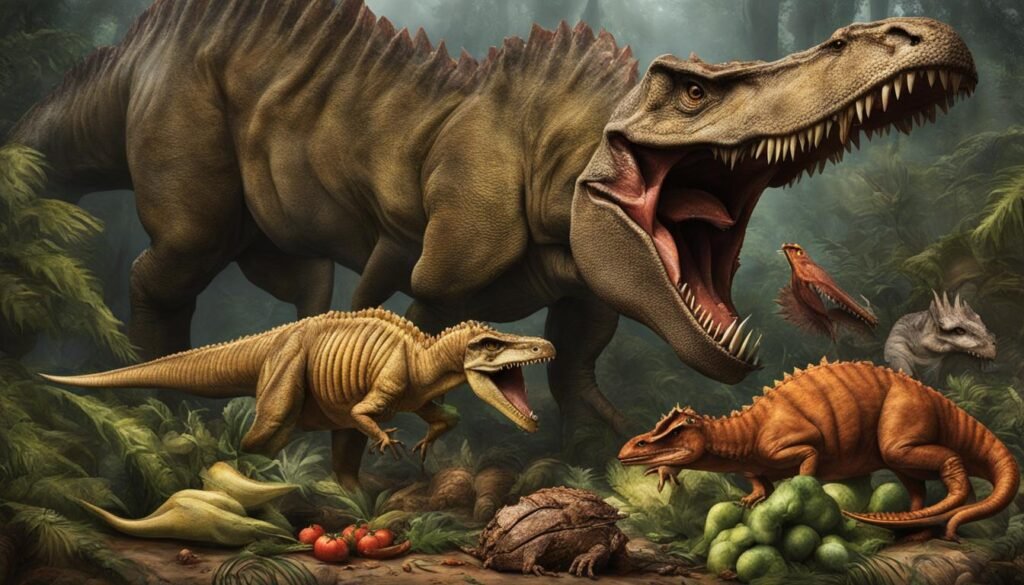
Implications for Dinosaur Adaptations and Diversification
Predation served as a significant evolutionary pressure for dinosaurs, driving remarkable adaptations in response to the challenges of hunting and defense. The relentless pressure from predators led to the development of various defensive structures, including spikes, horns, and plates, which were essential for survival in a world where being the hunted was a constant threat. These adaptations allowed dinosaurs to better defend themselves against predators and increased their chances of survival.
The diversification of dinosaur species was heavily influenced by predation. As different species faced unique selective pressures, they developed distinct adaptations that enabled them to occupy different ecological niches and specialize in different hunting strategies. Some dinosaurs evolved powerful jaws and sharp teeth for hunting and killing prey, while others developed superior speed and agility to outmaneuver predators. These adaptations led to the emergence of a wide variety of dinosaur species, each with its own specialized traits and characteristics.
Hunting behaviors played a crucial role in the success of ancient dinosaurs. While some dinosaurs were active hunters, pursuing and capturing their prey, others adopted scavenging behaviors, relying on the carcasses of other animals for sustenance. This division of labor allowed different species to coexist and reduced competition for resources, maximizing their chances of survival. Some dinosaurs also employed ambush tactics, lying in wait for unsuspecting prey to come within striking distance. These diverse hunting behaviors contributed to the overall ecological stability of dinosaur communities and further fueled the diversification of dinosaur species.
| Adaptations | Dinosaur Species |
|---|---|
| Spikes, horns, and plates for defense | Stegosaurus, Triceratops |
| Powerful jaws and sharp teeth for hunting | Tyrannosaurus rex, Allosaurus |
| Superior speed and agility for evading predators | Velociraptor, Gallimimus |
| Scavenging behavior | T. rex, Allosaurus |
| Ambush tactics | Deinonychus, Carnotaurus |
In summary, predation served as a powerful force that shaped the adaptations and diversification of dinosaurs. The constant threat of being preyed upon led to the development of defensive structures and specialized hunting behaviors. These adaptations allowed dinosaurs to thrive in different environments and occupy various ecological niches. By studying the implications of predation on dinosaur evolution, we gain valuable insights into the dynamics of ancient ecosystems and the remarkable history of these fascinating creatures.
Conclusion
Predation played a pivotal role in the evolution and diversification of dinosaurs. The presence of carnivorous dinosaurs, known as theropods, exerted a significant influence on prehistoric life, shaping the adaptations and behaviors of dinosaur species.
By studying various forms of evidence such as bite marks, injuries, and coprolites, researchers have gained valuable insights into the hunting behaviors of dinosaurs. These clues from the past help us unravel the mysteries of ancient ecosystems and understand the evolutionary history of dinosaurs.
Understanding the dynamics of predation in dinosaur evolution is crucial for comprehending the intricate relationships between predators and prey in the Mesozoic era. It highlights the fascinating ways in which different species developed unique adaptations to survive and thrive in their environments. The presence of defensive structures and the utilization of various hunting strategies by dinosaurs further demonstrate the intricate interplay of predator-prey interactions during this time.
By piecing together the evidence left behind by carnivorous dinosaurs, scientists continue to uncover the complex story of the prehistoric world. The study of hunting behaviors, carnivorous dinosaurs, and the impact of predation in dinosaur evolution is an ongoing journey of discovery that brings us closer to understanding the rich tapestry of life in the ancient past.

